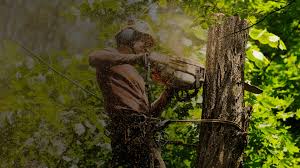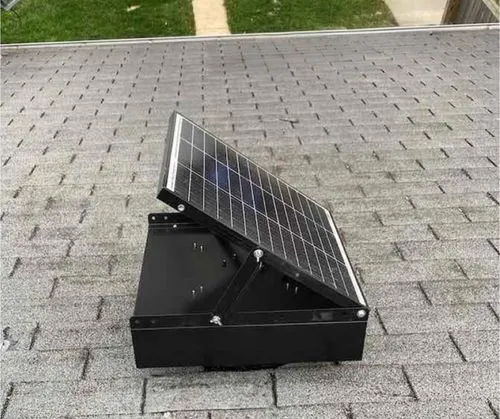Introduction
A tree stump in your yard might seem harmless, but it can become a nuisance over time. Whether it’s an eyesore, a tripping hazard, or a breeding ground for pests, removing a tree stump is essential for a clean and clear yard. There are multiple methods available, each with its own advantages and drawbacks. In this guide, we’ll explore the best ways to remove tree stumps and restore your outdoor space.
Why Remove Tree Stumps?
Before jumping into stump removal methods, it’s important to understand why getting rid of that leftover stump is beneficial.
1. Prevent Pest Infestations
Old tree stumps attract termites, ants, beetles, and fungi, which can spread to nearby plants and even your home. Eliminating the stump reduces the risk of these infestations.
2. Avoid Regrowth of Trees
Some stumps may sprout new shoots, leading to unwanted tree regrowth. This can cause additional maintenance issues and disrupt your landscaping plans.
3. Enhance Property Value and Aesthetics
A yard with decaying stumps looks unkempt. Removing them improves curb appeal, making your property more attractive to potential buyers.
PRO TIP Need expert tree removal in Miami Township, OH? Our professional tree services ensure safe, efficient removal for a clean and hazard-free yard. Call today for a free estimate!
Different Methods of Tree Stump Removal
There are several ways to remove a tree stump, ranging from manual methods to chemical treatments and even burning. Each method has its own pros and cons, depending on the size of the stump and your budget.
1. Manual Stump Removal
This method involves physically digging out the stump using tools such as an axe, shovel, and pickaxe. It’s best for smaller stumps and requires significant effort.
2. Chemical Stump Removal
Stump-removal chemicals accelerate the decomposition process, making it easier to break down the wood over time. It’s a slower process but requires less physical labor.
3. Stump Grinding
A stump grinder is a powerful tool that shreds the stump into wood chips. This is the quickest and most effective method but requires renting or hiring a professional.
4. Burning the Stump
Setting the stump on fire can gradually reduce it to ashes. While effective, this method requires safety precautions and may not be allowed in all areas due to fire regulations.
5. Natural Decomposition
If you’re not in a hurry, letting the stump decompose naturally with the help of fungi and organic materials is the most eco-friendly option.
Manual Stump Removal
Tools Needed
- Shovel
- Axe
- Pickaxe
- Saw
- Root-cutting shears
Step-by-Step Process
- Dig around the stump to expose its roots.
- Use an axe or saw to cut through the larger roots.
- Loosen the stump by rocking it back and forth.
- Remove smaller roots with shears.
- Lift the stump out of the ground and fill the hole with soil.
Best for: Small stumps with shallow root systems.
Chemical Stump Removal
How It Works
- Drill holes into the stump.
- Pour stump remover chemicals into the holes.
- Add water to help absorption.
- Wait for the stump to soften and decompose over several weeks.
Time Required
This method can take anywhere from 4-6 weeks for visible decomposition, depending on the chemical used and the stump’s size.
Stump Grinding
Process
- A stump grinder is used to shred the stump into small wood chips.
- The grinder moves back and forth over the stump until it’s ground down below the soil level.
- The remaining hole is filled with soil or mulch.
Pros and Cons
✅ Quick and efficient
✅ Works on large stumps
❌ Requires renting or hiring a professional
❌ Can be costly
Burning the Stump
Steps to Burn a Stump
- Drill holes into the stump.
- Pour kerosene or another fuel into the holes.
- Light the stump and let it burn down slowly.
- After burning, break apart remaining pieces and fill the hole with soil.
Safety Precautions:
- Check local fire regulations.
- Keep water or a fire extinguisher nearby.
- Do not burn during dry or windy conditions.
Natural Decomposition
How to Speed Up the Process
- Cover the stump with soil and compost.
- Keep the area moist to encourage fungi growth.
- Add nitrogen-rich fertilizers to accelerate decay.
Safety Tips for Tree Stump Removal
Regardless of the method you choose, safety should be your top priority.
1. Wear Protective Gear
- Safety goggles to protect your eyes from debris
- Heavy-duty gloves to prevent blisters and cuts
- Steel-toe boots for foot protection
- Long sleeves and pants to avoid scratches
2. Be Aware of Underground Utilities
Before digging or grinding, contact your local utility company to ensure there are no gas, water, or electrical lines running beneath the stump.
3. Follow Local Regulations
- Some areas have fire restrictions that prohibit stump burning.
- Certain chemicals may be restricted due to environmental concerns.
- If using a stump grinder, check if a permit is required.
What to Do After Stump Removal?
Once the stump is gone, you’re left with a hole in the ground. Here’s how to restore your yard:
1. Fill the Hole
- Use topsoil and compost to fill in the space.
- Tamp the soil down to prevent sinking over time.
2. Plant New Grass or Trees
- Grass seed: If you want a lush lawn, reseed the area.
- New tree or shrub: Choose a different species to prevent disease recurrence.
3. Consider Landscaping Ideas
- Install a garden bed over the area.
- Create a decorative stone pathway.
- Use the stump area for a firepit or seating area.
Conclusion
Removing a tree stump doesn’t have to be a daunting task. Whether you opt for manual removal, stump grinding, chemical treatments, or burning, each method has its own benefits. If you’re on a budget, DIY removal is an option, but for quick and efficient results, hiring a professional may be worth the investment.
Whatever method you choose, always prioritize safety, consider the environmental impact, and plan for what comes next in your yard’s landscaping.
- Install a garden bed over the area.
- Create a decorative stone pathway.
- Use the stump area for a firepit or seating area.
Conclusion
Removing a tree stump doesn’t have to be a daunting task. Whether you opt for manual removal, stump grinding, chemical treatments, or burning, each method has its own benefits. If you’re on a budget, DIY removal is an option, but for quick and efficient results, hiring a professional may be worth the investment.
Whatever method you choose, always prioritize safety, consider the environmental impact, and plan for what comes next in your yard’s landscaping.
- Install a garden bed over the area.
- Create a decorative stone pathway.
- Use the stump area for a firepit or seating area.
Conclusion
Removing a tree stump doesn’t have to be a daunting task. Whether you opt for manual removal, stump grinding, chemical treatments, or burning, each method has its own benefits. If you’re on a budget, DIY removal is an option, but for quick and efficient results, hiring a professional may be worth the investment.
Whatever method you choose, always prioritize safety, consider the environmental impact, and plan for what comes next in your yard’s landscaping.
- Install a garden bed over the area.
- Create a decorative stone pathway.
- Use the stump area for a firepit or seating area.
Conclusion
Removing a tree stump doesn’t have to be a daunting task. Whether you opt for manual removal, stump grinding, chemical treatments, or burning, each method has its own benefits. If you’re on a budget, DIY removal is an option, but for quick and efficient results, hiring a professional may be worth the investment.
Whatever method you choose, always prioritize safety, consider the environmental impact, and plan for what comes next in your yard’s landscaping.
- Install a garden bed over the area.
- Create a decorative stone pathway.
- Use the stump area for a firepit or seating area.
Conclusion
Removing a tree stump doesn’t have to be a daunting task. Whether you opt for manual removal, stump grinding, chemical treatments, or burning, each method has its own benefits. If you’re on a budget, DIY removal is an option, but for quick and efficient results, hiring a professional may be worth the investment.
Whatever method you choose, always prioritize safety, consider the environmental impact, and plan for what comes next in your yard’s landscaping.



